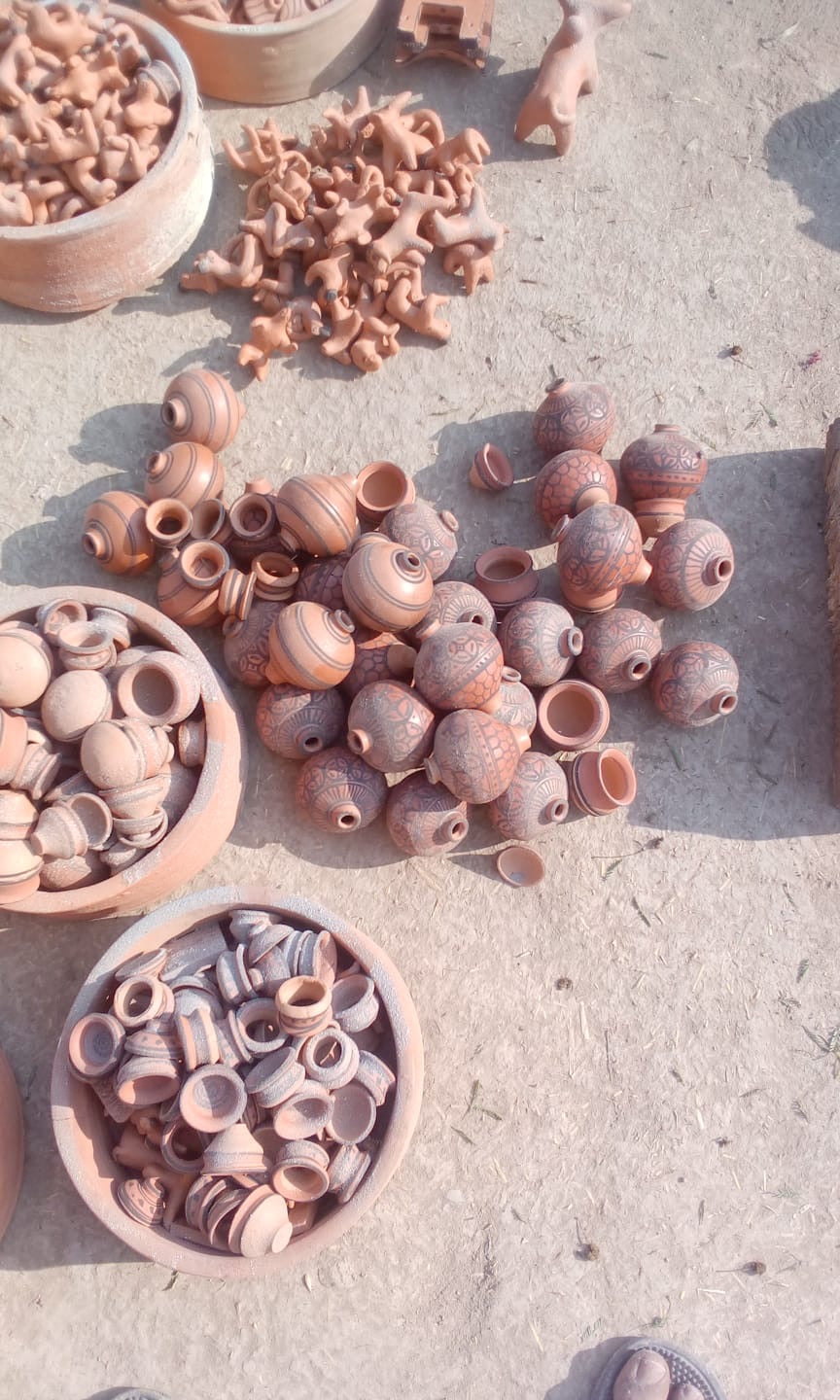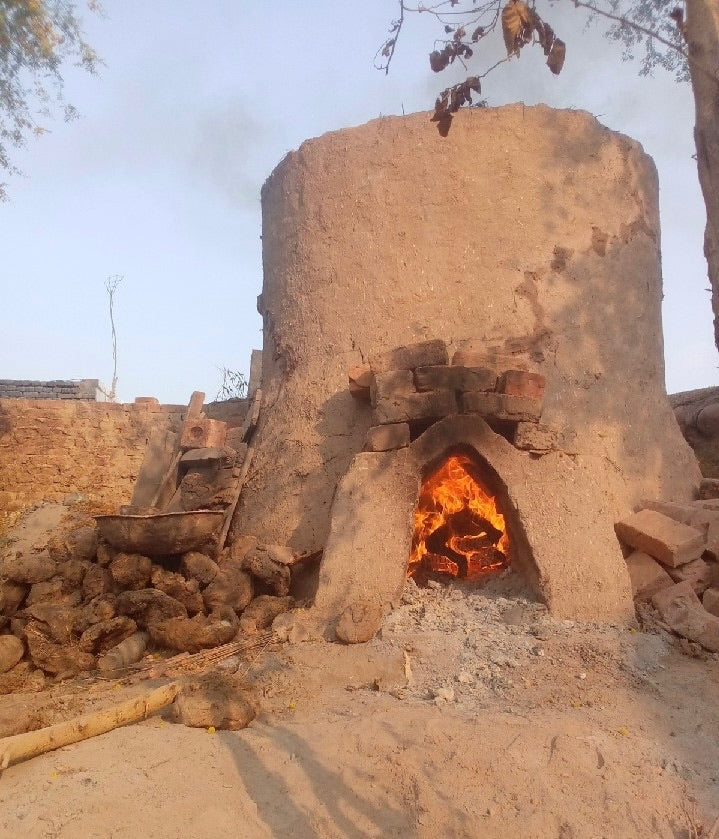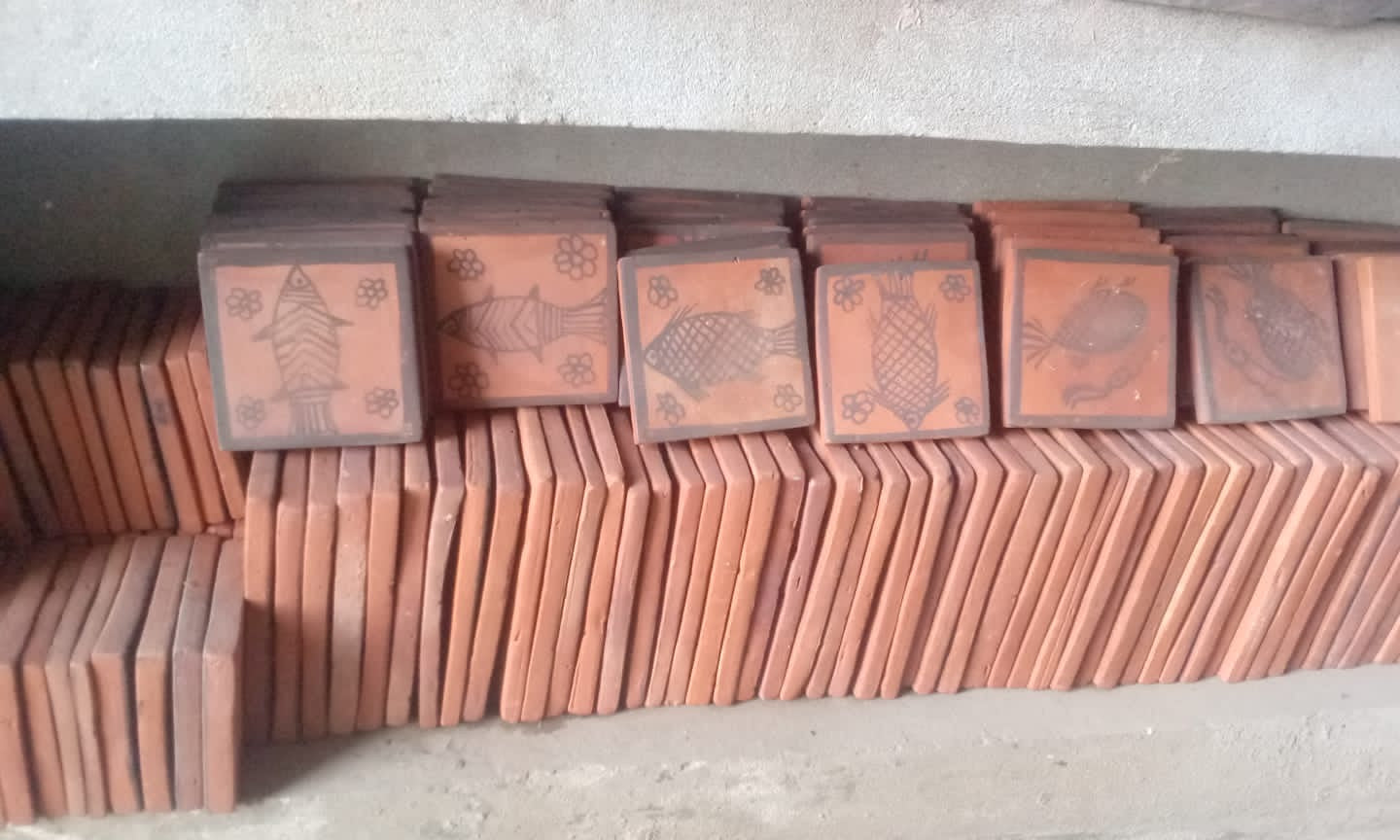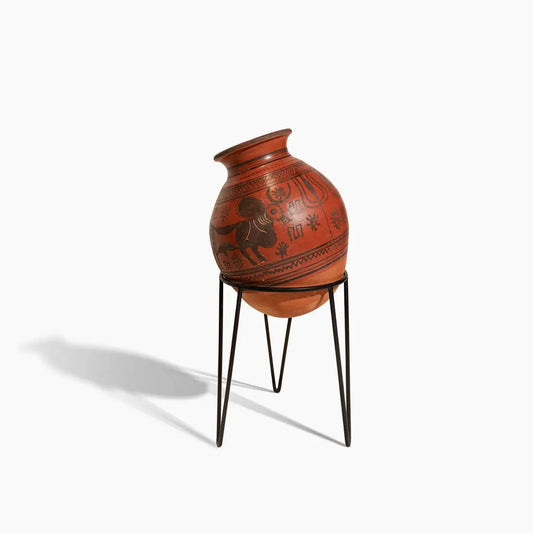Sahiwal, Punjab
Harappan Pottery
Harappan pottery is one of the most significant artifacts of the Indus Valley Civilization (circa 3300–1300 BCE), particularly from the ancient cities of Harappa and Mohenjo-Daro. This pottery reflects the sophisticated craftsmanship, artistic expression, and daily life of one of the world's earliest urban cultures. Made from locally sourced clay, Harappan pottery is known for its distinct shapes, geometric patterns, and symbolic motifs. Used for both practical purposes and ceremonial functions, it showcases the skill of Harappan artisans, who crafted these pieces by hand or using a potter’s wheel.



Collapsible content
Craftsmanship and Techniques
1. Material and Shaping
Harappan pottery was typically made using locally sourced clay, shaped either by hand or on a simple potter's wheel. The forms ranged from vessels, bowls, and storage jars to miniature figurines and small cups used for daily activities like cooking, storage, and serving.
2. Firing and Finishing
Once shaped, the pottery was fired at high temperatures in kilns, which gave it durability and a smooth finish. The red or brownish hue, common in Harappan pottery, is a result of this firing process. Many pieces have a glossy, burnished surface that reflects the artisan's polishing techniques.
3. Decorative Motifs
What sets Harappan pottery apart is its decorative details. Artisans painted the pottery with geometric patterns, animal motifs, and symbolic designs, often using black or dark red pigments. Common motifs include fish, birds, plants, and abstract symbols, reflecting the natural world and possible spiritual beliefs of the Harappan people.
4. Functional and Ceremonial Use
While much of Harappan pottery served practical functions—like cooking, storing grains, or serving food—some pieces, especially those with intricate decorations, may have had ritualistic or ceremonial purposes, highlighting their cultural significance.
Cultural and Historical Significance
Harappan pottery provides valuable insight into the daily life and belief systems of the Indus Valley Civilization. The geometric designs and animal motifs suggest a deep connection with nature, while the uniformity of the pottery points to standardized production, indicating a well-organized society. Archaeological discoveries of Harappan pottery across widespread areas show the extent of trade networks and cultural exchange, making these artifacts central to understanding the civilization’s economy, religion, and social structure.
Modern Relevance
Today, Harappan pottery is revered for its archaeological importance and is studied to uncover more about the Indus Valley Civilization. Replicas of Harappan pottery are also crafted by modern artisans, celebrating the ancient techniques and designs of this sophisticated civilization. These pieces serve as decorative items in homes and museums, preserving the legacy of one of the world’s oldest and most advanced urban cultures.
Shop Harappan Pottery products
-
 Sold out
Sold outHarappan Urn
Regular price Rs. 18,000Regular priceUnit price / per

